Creating an effective social media content calendar boosts engagement and streamlines your marketing efforts. It helps plan, schedule, and track posts efficiently.
A social media content calendar is crucial for consistent and strategic online presence. It organizes your posting schedule, ensuring you share the right content at the right time. Planning ahead allows you to align posts with key dates, events, and campaigns, enhancing engagement.
This guide will walk you through the steps to create a practical, functional content calendar. Learn how to choose the right tools, set achievable goals, and maintain flexibility. With a well-crafted calendar, your social media strategy becomes more manageable, allowing you to focus on creating impactful content.

Credit: property254.co.ke
Introduction To Social Media Content Calendars
Creating a social media content calendar can seem overwhelming at first. But it’s a game-changer for your social media strategy. This guide will help you understand the importance and benefits of a content calendar. Stay organized and consistent with your posts.
Importance Of Planning
Planning is the backbone of successful social media management. Without a plan, your posts may lack consistency and impact. A content calendar helps you stay on track. It ensures that you cover all important topics and events.
A well-thought-out plan saves you time. You won’t have to scramble for ideas at the last minute. It also helps in aligning your social media goals with your marketing strategy.
Benefits Of A Content Calendar
A social media content calendar offers multiple benefits. Here are a few:
- Consistency: Posting regularly keeps your audience engaged.
- Time Management: Plan posts ahead to save time.
- Content Variety: Ensure a mix of content types.
- Better Analytics: Track what works and what doesn’t.
- Collaboration: Easy for teams to coordinate and contribute.
By using a content calendar, you can plan your posts around key events and holidays. This ensures that your content is always relevant and timely.
A content calendar also helps in maintaining a balance of content types. Mix promotional posts with educational or entertaining content to keep your audience interested.
| Benefit | Description |
|---|---|
| Consistency | Regular posts keep your audience engaged. |
| Time Management | Plan ahead to save time. |
| Content Variety | Ensure a mix of content types. |
| Better Analytics | Track what works and what doesn’t. |
| Collaboration | Teams can easily coordinate and contribute. |
Setting Goals For Your Content
Creating a social media content calendar is essential. It keeps your strategy organized and effective. But before diving into posts and schedules, you need clear goals. Setting goals will guide your content creation. It ensures your posts align with your business objectives.
Defining Objectives
The first step in setting goals is to define your objectives. What do you want your content to achieve? Here are some common objectives:
- Increase brand awareness
- Engage with your audience
- Drive traffic to your website
- Generate leads and sales
- Build a community
Each objective requires different types of content. Identify your primary goals to tailor your content accordingly. This ensures your efforts are focused and effective.
Aligning With Business Goals
Your content goals should align with your business goals. This alignment ensures that your social media efforts support your overall strategy. Here’s a table to illustrate how content goals can align with business goals:
| Business Goal | Content Goal |
|---|---|
| Increase Sales | Generate leads through informative posts |
| Build Brand Awareness | Create engaging and shareable content |
| Improve Customer Service | Respond promptly to comments and messages |
Setting clear goals makes your content more effective. It helps you measure success and make adjustments as needed. Always revisit and refine your goals to stay on track.
Choosing The Right Platforms
Choosing the Right Platforms for your social media content is crucial. Each platform has its unique strengths. Identifying the right ones will help you engage your audience better. This section will guide you through the process.
Identifying Your Audience
First, know who your audience is. Are they teens, adults, or seniors? You need to understand their interests and habits. Use tools like Google Analytics to gather data. Create a detailed audience persona. This includes age, gender, location, and interests.
Here is an example of an audience persona:
| Attribute | Details |
|---|---|
| Age | 25-35 |
| Gender | Female |
| Location | Urban areas |
| Interests | Fashion, Travel, Technology |
Evaluating Platform Strengths
Each platform offers different strengths. For instance, Facebook is great for community building. Instagram excels in visual content. Twitter is best for real-time updates. Here’s a quick guide:
- Facebook: Ideal for sharing articles and videos.
- Instagram: Perfect for photos and short videos.
- Twitter: Suitable for quick updates and news.
- LinkedIn: Best for professional and B2B content.
Choose platforms where your audience is most active. Use platform-specific features to your advantage. For instance, use Instagram Stories for quick updates. Use LinkedIn Articles for in-depth pieces.
By choosing the right platforms, you ensure your content reaches the right people. This boosts engagement and improves your overall strategy.

Credit: www.linkedin.com
Content Types And Themes
Creating a social media content calendar can be overwhelming. But, with the right mix of content types and themes, it becomes easier. This section will help you understand how to keep your audience engaged with a variety of content and themes.
Variety Of Content
Using different content types keeps your feed fresh. Here are some popular options:
- Images: High-quality photos grab attention.
- Videos: Short clips, tutorials, or behind-the-scenes footage.
- Infographics: Visual data representations that simplify complex information.
- Quotes: Inspirational or humorous quotes that resonate with your audience.
- Polls: Engaging questions that encourage audience interaction.
- Blog Posts: Share excerpts or link to full articles.
Mix these content types to keep your audience engaged and interested.
Seasonal And Evergreen Themes
Balancing seasonal and evergreen themes ensures your content remains relevant year-round. Here’s a simple table to illustrate:
| Seasonal Themes | Evergreen Themes |
|---|---|
| Holidays (Christmas, Halloween) | How-to Guides |
| Seasonal Trends (Summer Fashion, Winter Recipes) | FAQs |
| Events (New Year, Black Friday) | Testimonials |
Seasonal themes align with specific times of the year. Evergreen themes are always relevant and valuable. Use a mix of both for a balanced content calendar.
By focusing on these content types and themes, your social media calendar will be more effective and engaging.
Creating A Content Schedule
Planning a social media content calendar is essential for success. It helps you stay organized and consistent. A well-structured schedule can save time and boost engagement. This guide covers the key aspects of creating an effective content schedule.
Frequency And Timing
Posting frequency and timing are crucial. You need to post consistently to keep your audience engaged. Below is a table to help you decide how often to post on various platforms.
| Platform | Recommended Frequency | Best Times to Post |
|---|---|---|
| 1-2 times per day | 1 PM – 4 PM | |
| 1-3 times per day | 11 AM – 2 PM | |
| 3-5 times per day | 12 PM – 3 PM | |
| 1 time per day | 10 AM – 11 AM |
Use this table to guide your posting schedule. Always adjust based on your audience’s activity.
Balancing Quality And Quantity
Balancing quality and quantity is essential. You need to post frequently but also ensure high-quality content. Here are some tips to maintain that balance:
- Plan Ahead: Create a monthly content calendar.
- Use Tools: Utilize scheduling tools like Hootsuite or Buffer.
- Repurpose Content: Transform blogs into social media posts.
- Engage with Followers: Respond to comments and messages promptly.
Quality should never be compromised for quantity. It is better to post less frequently if it means higher quality.
Tools And Software For Planning
Creating a social media content calendar can be challenging without the right tools. The right tools streamline your planning process and save time. They also ensure that your content is organized and consistent.
Popular Tools
Various tools can help you create an effective content calendar. Here are some popular options:
| Tool | Description | Price |
|---|---|---|
| Trello | A flexible project management tool with customizable boards and cards. | Free / Paid |
| Hootsuite | A social media management tool with scheduling and analytics features. | Free / Paid |
| Buffer | Another social media management tool known for its simplicity and ease of use. | Free / Paid |
Features To Look For
When choosing a tool, look for features that meet your needs. Here are some essential features:
- Scheduling: The ability to schedule posts in advance.
- Collaboration: Features that allow team members to work together.
- Analytics: Tools to measure the performance of your posts.
- Integration: Compatibility with various social media platforms.
Choosing the right tool is crucial for a successful content calendar. Ensure the tool you pick offers the features you need.
Measuring Success
Creating a social media content calendar is crucial. But how do you know if it’s effective? Measuring success is the key. By tracking the right metrics and adjusting your strategy, you can ensure your social media efforts pay off.
Key Metrics
To measure success, focus on key metrics. These metrics will give you insights into your performance.
- Engagement Rate: Calculate likes, comments, and shares. High engagement means your content resonates.
- Reach: Track how many people see your posts. A higher reach means more visibility.
- Click-Through Rate (CTR): Measure the number of clicks on your links. A higher CTR indicates effective content.
- Conversion Rate: Look at how many followers take action. This could be signing up for a newsletter or making a purchase.
- Follower Growth: Check your follower count over time. Growth shows your audience likes your content.
Adjusting Your Strategy
Data is only useful if you act on it. Adjusting your strategy is crucial to stay relevant.
- Analyze Trends: Look for patterns in your metrics. See which posts perform best.
- Optimize Content: Improve underperforming posts. Use high-performing content as a template.
- Test New Ideas: Experiment with different types of content. Videos, images, and polls can drive engagement.
- Monitor Competitors: Keep an eye on what works for them. Learn from their successes and mistakes.
- Update Regularly: Your audience and trends change. Update your calendar to keep up.
By focusing on these key metrics and adjusting your strategy, you can create a social media content calendar that actually works.
Tips For Consistency And Engagement
Creating a social media content calendar ensures you stay organized and focused. Consistency and engagement are key to a successful social media strategy. This section will provide tips to maintain consistency and encourage audience interaction effectively.
Staying Consistent
Consistency builds trust and keeps your audience engaged. Here are some tips:
- Plan Ahead: Use tools like Google Calendar or Trello to plan posts.
- Set a Posting Schedule: Decide how often you will post. Stick to it.
- Batch Content Creation: Create content in bulk to save time and ensure a steady flow.
- Use Templates: Use graphic templates for quick and consistent post designs.
- Automate: Use tools like Hootsuite or Buffer to schedule posts in advance.
A table can help track your posting schedule:
| Day | Platform | Content Type | Time |
|---|---|---|---|
| Monday | Image Post | 9 AM | |
| Wednesday | Text Post | 12 PM | |
| Friday | Video Post | 5 PM |
Encouraging Audience Interaction
Engagement is vital for social media success. Follow these tips:
- Ask Questions: Encourage responses by asking open-ended questions.
- Run Polls: Use Instagram Stories or Twitter polls to get feedback.
- Share User-Generated Content: Feature content created by your audience.
- Host Giveaways: Run contests to boost engagement and reward followers.
- Reply Promptly: Respond to comments and messages quickly to show you care.
Use these tips to keep your audience engaged:
- Be Authentic: Show genuine interest in your audience.
- Use Emojis: Make your posts more relatable with emojis.
- Share Behind-the-Scenes: Give a peek into your process or team.
Troubleshooting Common Issues
Creating a social media content calendar can sometimes be challenging. You may face issues that disrupt your plan. This guide will help you handle these problems effectively. Let’s dive into troubleshooting common issues.
Handling Content Gaps
Content gaps can make your calendar look empty and unplanned. Here are some tips to fill those gaps:
- Repurpose Old Content: Use old posts in a new way.
- Plan Ahead: Use a content bank to store ideas.
- User-Generated Content: Share posts from your audience.
- Curate Content: Share valuable content from other sources.
If you still face gaps, try using a mix of the above strategies. This ensures you always have content to post.
Dealing With Low Engagement
Low engagement can hurt your social media efforts. Here are some ways to boost engagement:
- Analyze Your Content: Check which posts get the most likes and shares.
- Post at Peak Times: Share content when your audience is most active.
- Engage with Your Audience: Reply to comments and messages.
- Use Visuals: Posts with images or videos get more attention.
To keep track, consider creating a table to record your engagement metrics:
| Post Date | Content Type | Engagement Rate |
|---|---|---|
| 01/01/2023 | Image Post | 15% |
| 02/01/2023 | Video Post | 20% |
Use these strategies to keep your audience engaged and active.
Case Studies And Examples
Creating a social media content calendar can transform your online presence. It helps you stay organized and consistent. To understand its impact, let’s explore some case studies and examples. These real-life stories will inspire and guide you.
Successful Calendars
Many businesses have excelled by using social media content calendars. Let’s see how they did it.
| Company | Strategy | Results |
|---|---|---|
| Company A | Posted daily with a mix of content types | Gained 10,000 followers in 3 months |
| Company B | Used themed days (e.g., #MotivationMonday) | Increased engagement by 50% |
| Company C | Scheduled posts during peak hours | Boosted website traffic by 30% |
Lessons Learned
These case studies offer valuable lessons. Here are the key takeaways:
- Consistency: Posting regularly keeps your audience engaged.
- Variety: Mix different types of content to keep it interesting.
- Timing: Schedule posts when your audience is most active.
By studying these examples, you can create a social media content calendar that works. Remember to stay adaptable and listen to your audience’s feedback.

Credit: blog.hubspot.com
Frequently Asked Questions
How To Create An Effective Social Media Content Calendar?
To create an effective social media content calendar, start by setting clear goals. Identify your target audience. Plan content themes and types. Schedule posts consistently. Use analytics to refine your strategy.
What Is The Best Social Media Content Planner?
The best social media content planner is Hootsuite. It offers scheduling, analytics, and team collaboration features. Tools like Buffer and Later are also highly recommended for their user-friendly interfaces and robust functionalities.
What Does A Good Social Media Calendar Look Like?
A good social media calendar includes a posting schedule, content ideas, target audience details, and performance metrics. It ensures consistency.
What To Consider When Creating A Content Calendar?
Consider your audience, content types, posting frequency, key dates, and collaboration. Plan ahead to stay organized and consistent.
Conclusion
Creating a social media content calendar streamlines your marketing efforts. It ensures consistent and engaging posts. Follow the steps outlined to boost your online presence. Plan, execute, and monitor to see tangible results. Stay organized and watch your social media grow efficiently.
Implement these tips and elevate your brand’s digital strategy.






